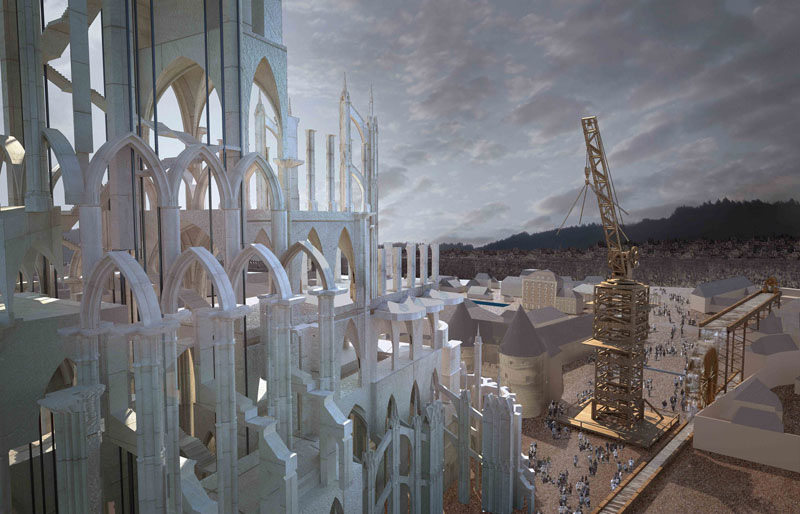
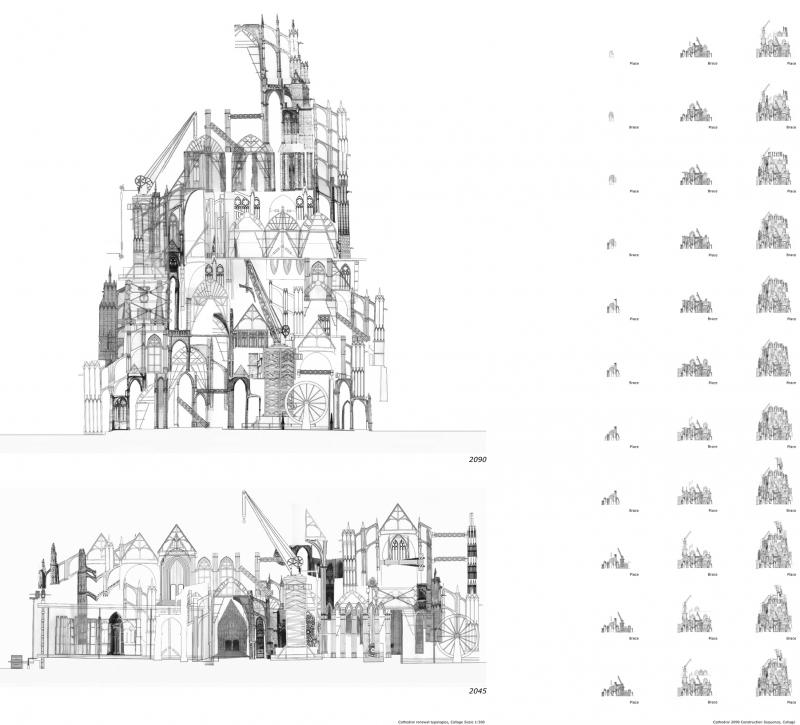
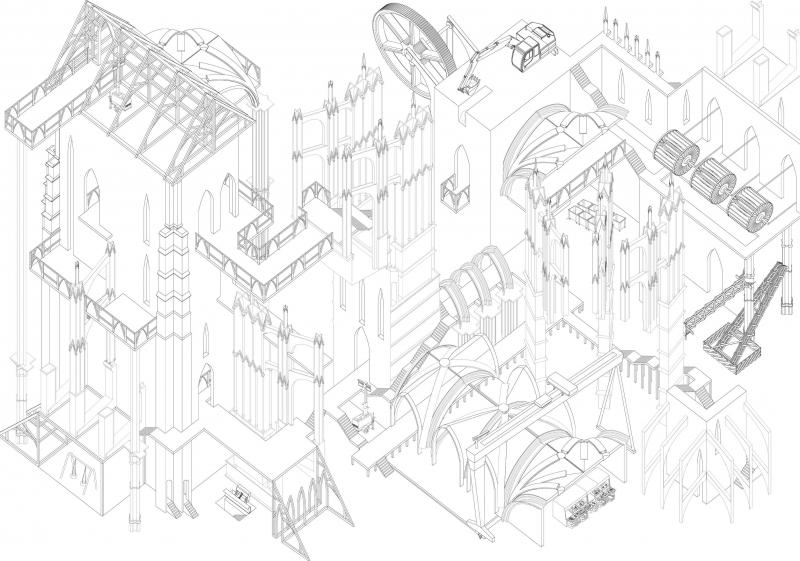
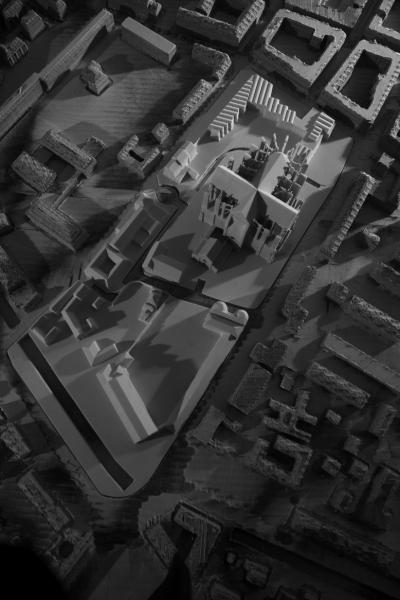
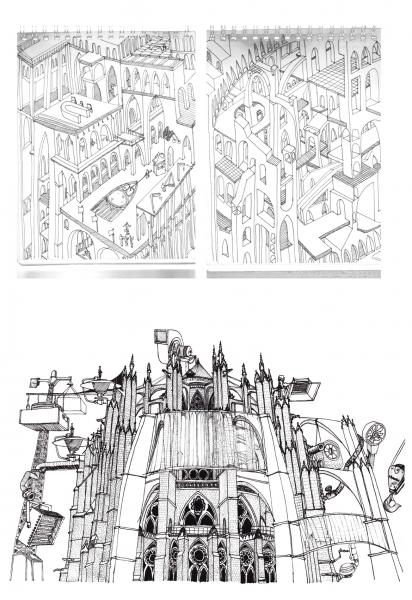
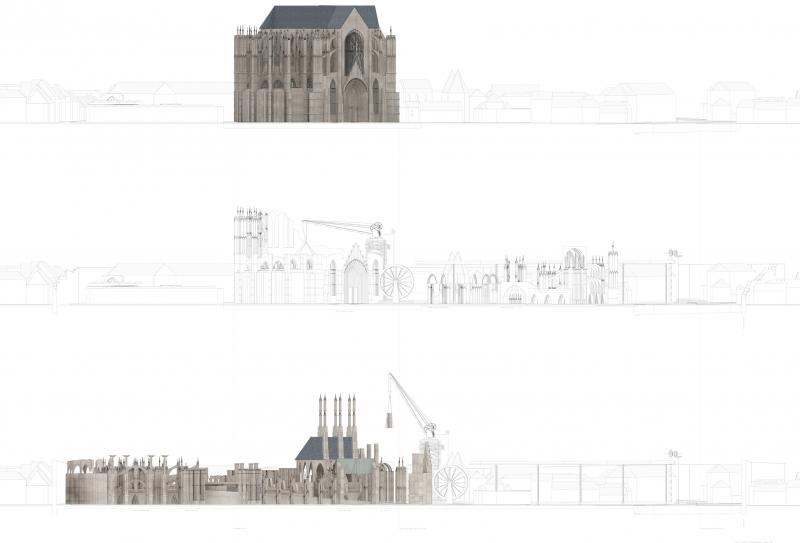
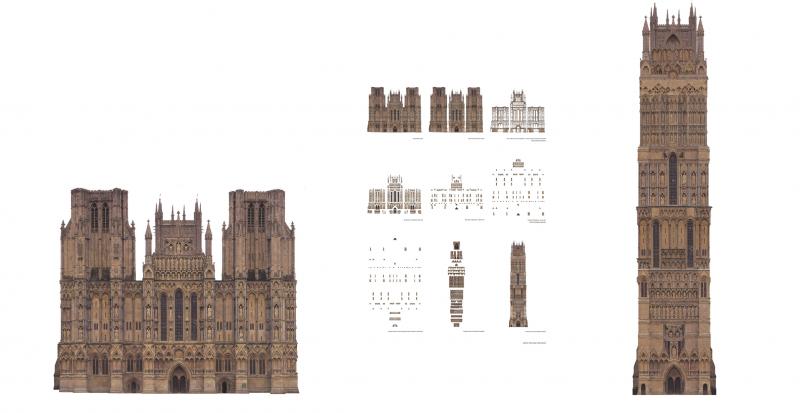
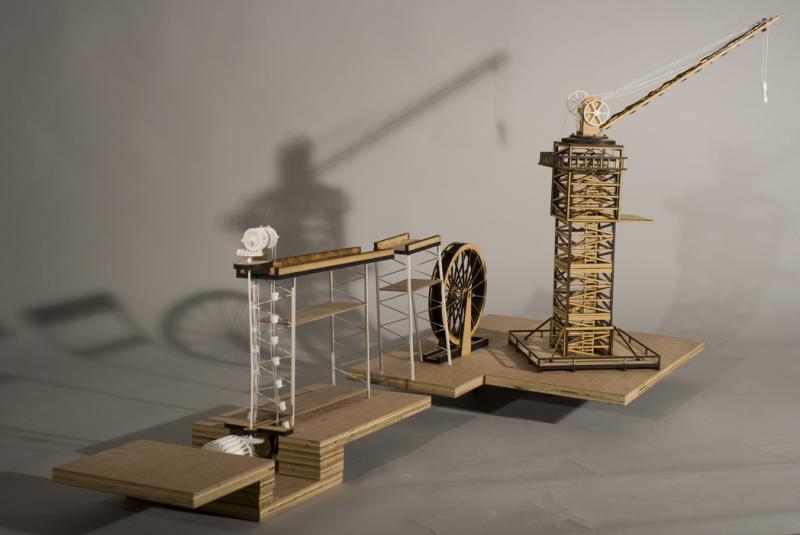
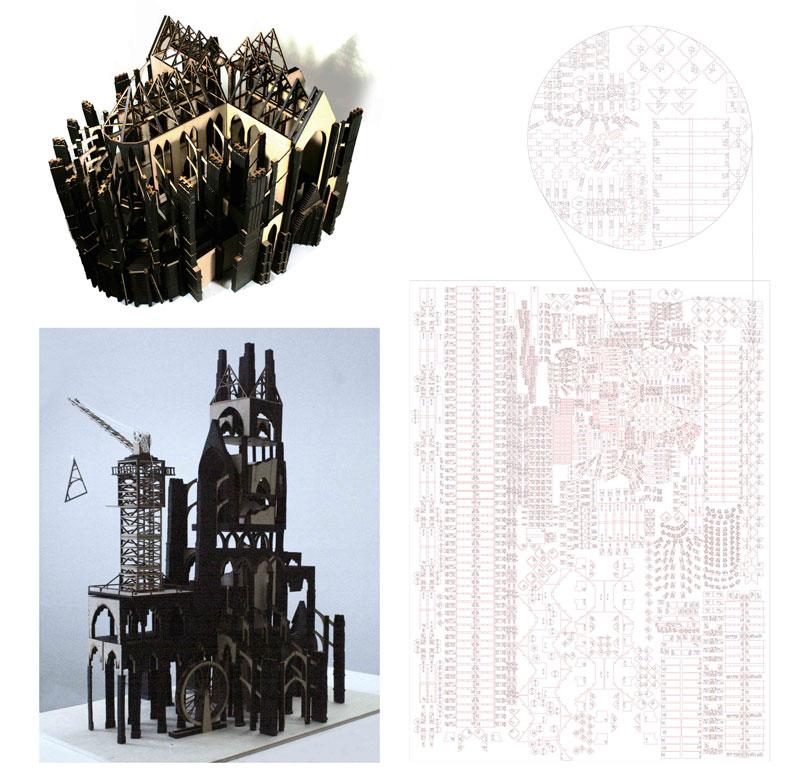
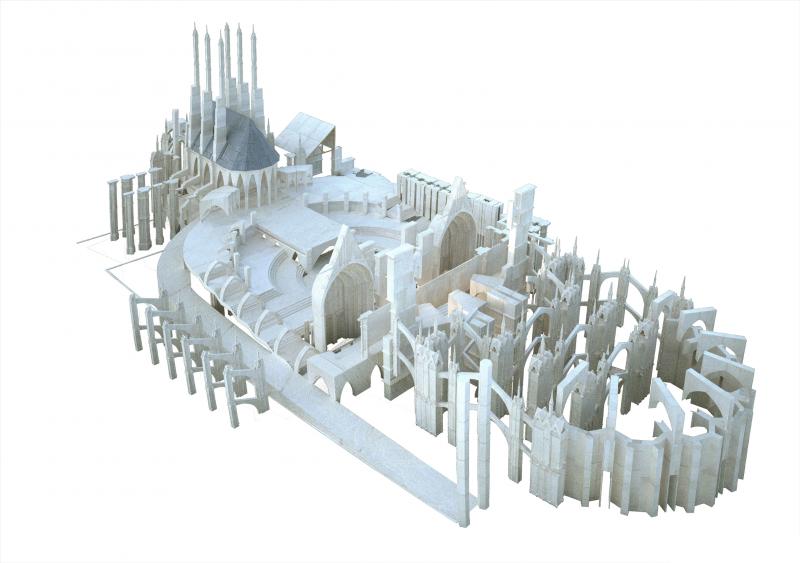
Post-oil translation, explores the paradigm of a 'complete' architecture, through the inversion of preservation, to regain the cathedral's original civic application. Set in a post-oil era, at a time of civil unrest, Beauvais' commune will demand that its only asset, will be reborn. By reframing the cathedral as the physical and symbolic centre of the city, it represents a multi layered heterotopia of construction and activity. In order to ascertain flexibility within such a rigid stone mass, the cathedral will be deconstructed by a medieval revival mechanism. The permanence of the crane will allow the gothic masonry to be assembled, moved, re-arranged and scrapped continuously, allowing unprecedented control to the public and its immediate context. A re-established language of craft will be recycled through the embellished use of the hand as the future cathedrals of Beauvais evolve around the guild and the holistic disposition of the ‘master builder’ will return, as the designer is once again the builder.